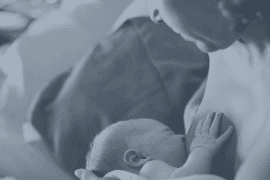How to stop
This is where I often wish I had a magic wand… I’d love to be able to give it a wave while saying “Mama you’ve worked hard enough for long enough – all your problems are gone!” But if I could do that, I’d be a millionaire and wouldn’t need to write books to fund my coffee addiction.
The information that follows is for information only – please don’t try to do this work without qualified support. There are times when we need to do things differently.
Essentially, we have to stop slowly (sorry!) To begin with, it is helpful to notice how much milk baby is taking per feed and per day. This probably varies a little, but you can usually get to a minimum and maximum volume.
Once you know roughly how much baby is taking each day, you can choose a feed and reduce the top up amount by 10 – 20ml.
That is it for now – one feed only and reduced by no more than 20ml.
“But that’s nothing!” I hear you yell at me.
I know. It is not a lot, but here’s why this is a good approach:
- If baby cannot cope with more milk at the breast and less in bottles, 20ml less per days is unlikely to cause any serious or significant issues.
- For many babies they can get that extra amount from the breast – it’s not a big challenge for them, but it will be asking them to do a little more than usual, building stamina and patience.
So, what you do is this:
- Breastfeed baby as normal.
- Offer usual top up minus 10 – 20ml. (so if you usually give 90ml, you’re going to offer 70 – 80ml)
- Return baby to the breast, using breast compressions and switch nursing.
- If baby is placated with the breast and maybe some cuddles or a nappy change – amazing. Just carry on with your day, giving normal top ups for the rest of that day’s feeds.
- If baby is unsettled (or raging!) then simply give them the 10 – 20ml you usually would and try again in a few days.
- Once you have had 5 days in a row where baby has not needed their 10 – 20ml extra, either reduce the same feed by the same amount again or pick another feed and do the same.
- After another 5 days baby should be weighed. If weight gain is on track, then keep reducing top ups by up to 20ml. At this point you could go faster or slower according to your instincts and being guided by the Health Care Providers supporting you.
- Once you are able to get a top up amount down to about 30ml you can experiment with stopping the pump session immediately after this top up.
- If at any point during this process something seems wrong – baby is acting differently, you’re seeing fewer wet nappies than usual, your breasts are uncomfortable or ANYTHING at all doesn’t feel right, please get in touch right away with a medical professional.
- Weight must be monitored throughout this process, and you should work with a health care provider and / or IBCLC.
A word on paced feeding
It is very easy to over feed a baby with a bottle. Pacing the feed by slowing the flow and helping baby to take breaks from the bottle feed can give their tummy time to tell their brain that they are full.
You might be surprised to see that baby needs less milk than you are topping up with!
In conclusion, triple feeding is hard work but if you are well supported to work on the underlying issues and to slowly reduce top ups and pumping, then you can absolutely overcome this bump in your breastfeeding journey. Don’t be afraid to seek help from family, friends, and your country’s breastfeeding support charities – you shouldn’t have to do this work alone. Above all – remember that you are your baby’s world and that they love you unconditionally. You are a great parent – believe in yourself.
Lucy Ruddle is an International Board Certified Lactation Consultant (IBCLC) and author working and living on the South Coast of the UK. As a mum of two boys who where challenging to breastfeed Lucy understands the emotional rollercoaster of infant feeding and aims to offer gentle, parent led and non judgemental support to the families she works with. You can join her communities on Instagram and Facebook.










